| St. Mihiel offensive, France, 12 September-16 September, 1918. |
|
|
| |
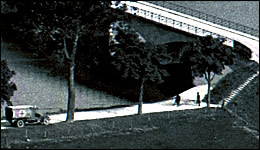 |
This is a great view of Moron [sic Maron], France, taken while the men were at rest and training.
Visible on the road by the river are men, horses and ambulances. |
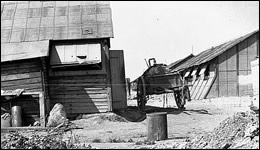 |
Camp du Bois l'Eveque 24, Aug. '18. |
 |
Military Police regulating traffic during the American Drive on St. Mihiel Salient.
Domèvre-en-Haye, France. September 12, 1918. |
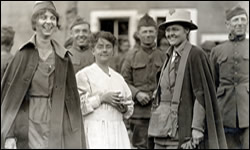 |
Y.M.C.A. WORKERS CLOSE BEHIND lines ready and willing to serve the boys chocolate as they trudge back from drive they launched two days before in St. Mihiel sector.
Left to right:- Elizabeth Drott, Grinnell, Iowa; Mrs. Clara Simmons, Grafton, Mass.; Miss Avril E.Hawthorne, Portland, Ore.; C.A.Lewis, Berkeley, Calif.; H.W.Baucom, Apex, N.C.; H.E.Hoskman, Lockhaven, Pa.; All attached to the 2nd. Division.
Limey, Meurthe et Moselle, France. September 14, 1918. |
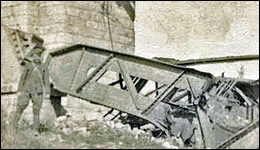 |
R. R. Bridge demolished by the French. Near Flirey. Taken 18, Sept., '18. |
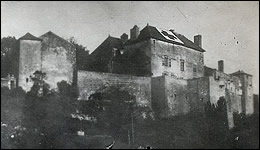 |
15th Field Artillery at Jaulny, France |
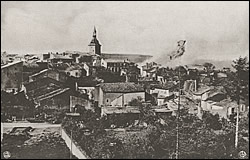 |
The burning of Thiaucourt on the afternoon of Sept. 12, 1918. Thiaucourt was one of the principal towns in the St. Mihiel salient. It was occupied by the Marine brigade during the reduction of the salient. "The reduction of the St. Mihiel salient," says General Pershing in his final report, "was important, as it would prevent the enemy from interrupting traffic on the Paris-Nancy railroad by artillery fire and would free the railroad leading north through St. Mihiel to Verdun. It would also provide us with an advantageous base of departure for an attack against the Metz-Sedan railroad system which was vital to the German armies west of Verdun, and against the Briey Iron Basin which was necessary for the production of German armament and munitions." |
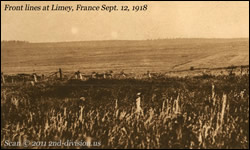 |
Limey, France, Sept. 12, 1918. |
 |
2nd Engineers, 2nd Div. Replacing tracks at Bouillonville which were torn by American shells.
Bouillonville, Meurthe et Moselle, France. September 15, 1918.
|
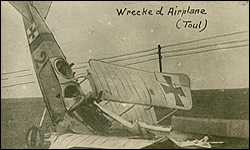 |
Wrecked Airplane (Toul) |
|
| |
|
| |
|

